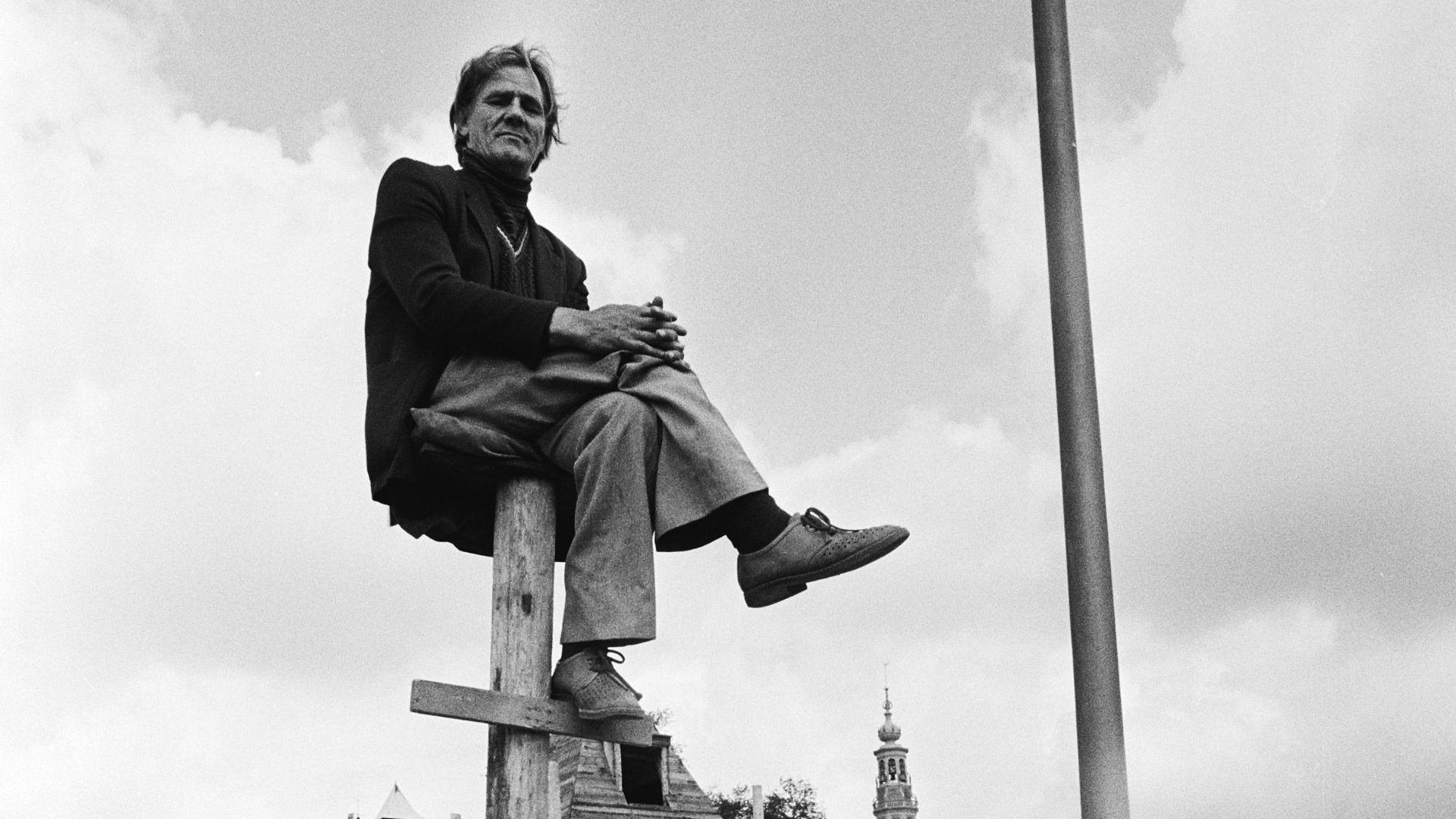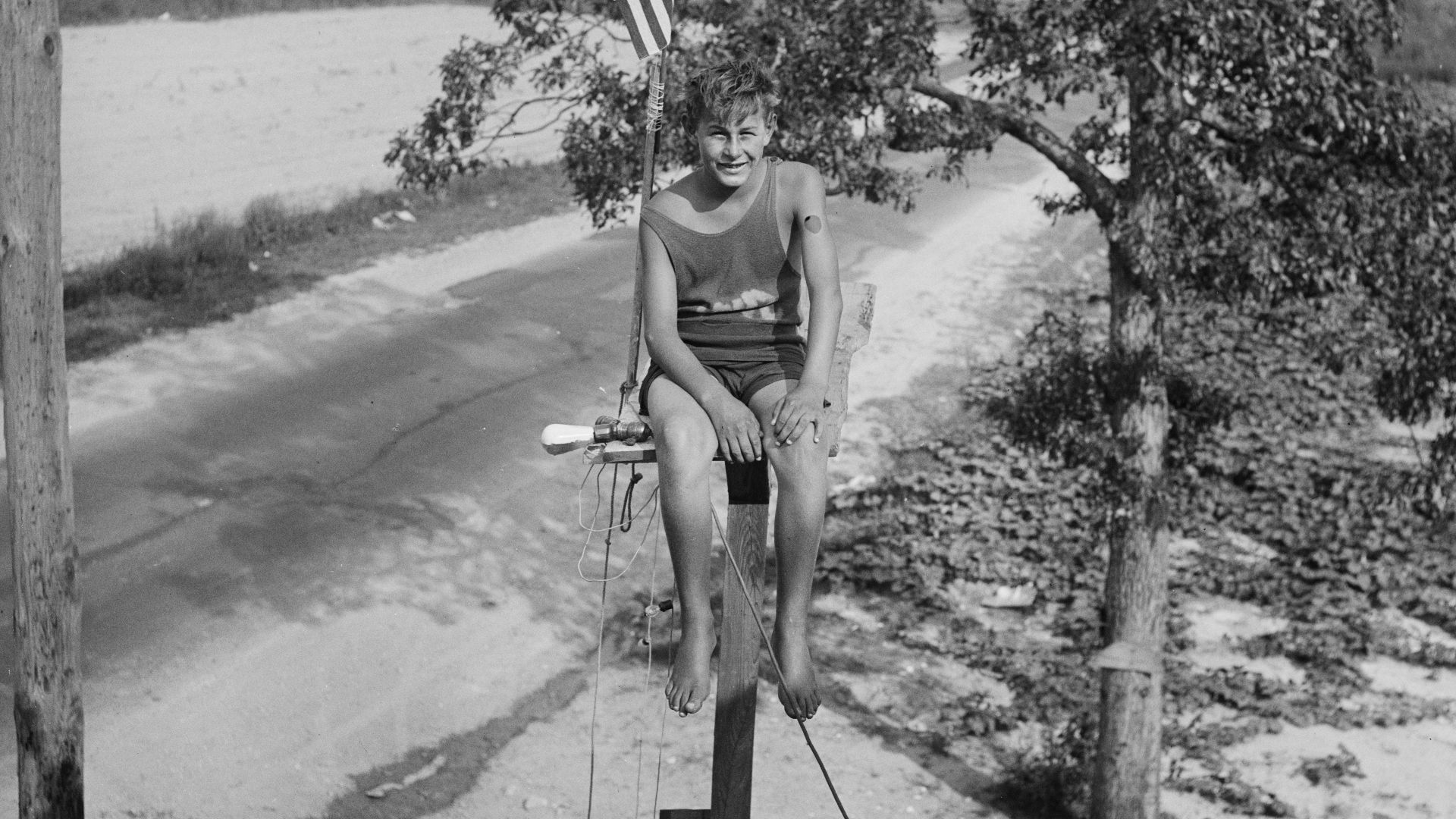In the shadow of the Great War, as America roared into a decade of unprecedented prosperity and social change, a peculiar pastime captured the nation's imagination. While we scroll through endless TikTok challenges today, the 1920s had just one truly bizarre craze that defined an era: pole-sitting. Yes, you read that right. Now join us as we explore this uniquely bizarre 20th-century fad.
The Rise Of The Flagpole Sitter
 Hans van Dijk for Anefo on Wikimedia
Hans van Dijk for Anefo on Wikimedia
The concept was beautifully, maddeningly simple—climb atop a flagpole or specially constructed perch and... stay there. For days. Sometimes weeks. Occasionally months. It all began with Alvin "Shipwreck" Kelly, a former sailor with a flair for showmanship who first took to a flagpole in 1924.
Perched atop the pole on a small platform barely larger than a kitchen chair, Kelly sat for 13 hours and 13 minutes at a Hollywood theater, initially as nothing more than a publicity stunt to draw crowds. Little did he know he would inspire a national phenomenon that would spread like wildfire across America's cities and small towns alike.
The beauty of pole-sitting lay in its accessible absurdity. It required no special talent beyond extraordinary patience and a comfortable relationship with heights. Yet it thrilled a generation seeking distraction and spectacle in the heady days of Prohibition.
Life On The Pole
The logistics of pole-sitting revealed both human ingenuity and the depths of our desire for fame. Platforms typically measured about 1–2 feet, or roughly the size of a dinner tray or a small chair seat. Enterprising sitters equipped their perches with basic amenities.
Weather posed the greatest challenge, though. Rain, wind, and thunderstorms tested even the most dedicated sitters. Many employed restraints to prevent falling while asleep, essentially tethering themselves to their perches with rope harnesses. During lightning storms, these metal poles became lightning rods, adding an element of genuine danger to the spectacle.
Food arrived via rope and pulley, with supporters below sending up everything from sandwiches to hot coffee. Sleep came in brief snatches, often sitting upright. The psychological toll proved as demanding as the physical due to the endless hours of boredom punctuated by moments of discomfort.
Legacy Of America's Strangest Obsession
 Harris & Ewing, photographer on Wikimedia
Harris & Ewing, photographer on Wikimedia
By the late 1920s, pole-sitting records stretched into countless days. Shipwreck Kelly’s longest sit lasted 49 days in Atlantic City. His fame made him a household name, though fortune proved more elusive. Women joined the craze, too.
Most interesting was Avon "Azey" Foreman. He was a 15-year-old boy who set a juvenile record of 10 days, 10 hours, 10 minutes, and 10 seconds on an 18-foot backyard pole in Baltimore.
As with all fads, pole-sitting eventually lost its novelty. The 1929 stock market crash and the subsequent Depression cast a somber shadow over such frivolous pursuits. America no longer had the luxury of watching someone do nothing for days on end; real challenges demanded attention.
KEEP ON READING

20 Weird Origins Of Everyday Words
Switching The Meaning. You don’t always need to understand a…
By Breanna Schnurr Nov 12, 2025
20 Longest Championship Droughts in Sport History
Will the Guardians Ever Win a Championship?. Being a sports…
By Rob Shapiro Nov 12, 2025
Laughter Isn’t The Best Medicine. How Hysteria Took Over A…
OurWhisky Foundation on UnsplashOn January 30th, 1962, an all-girls boarding…
By Breanna Schnurr Nov 11, 2025
When Robert Gould Shaw Fell in Battle, No One Retrieved…
Whipple Studio, 1847 - 1873 on WikimediaColonel Robert Gould Shaw…
By Cameron Dick Nov 11, 2025
The Love Triangle That Ended In The Trial Of The…
Evelyn Nesbit was a 20th-Century Helen of Troy. Considered the…
By Ashley Bast Nov 11, 2025
10 Countries With The Lamest Origin Stories & 10 With…
Some Nations Rose In Glory—Others In Paperwork. Not all nations…
By Emilie Richardson-Dupuis Nov 11, 2025
